
Ingredient
Green onions
Versatile Alliums: Exploring the World of Green Onions
Green onions, also referred to as scallions or spring onions, are young onions harvested before they fully mature. They have long, slender green stalks and small white bulbs. Green onions offer a milder and fresher flavor compared to mature onions, making them a popular choice in dishes where a subtle onion taste is desired. They can be used raw or cooked, adding a refreshing crunch and mild onion essence to a wide range of culinary creations.
Origins and history
Green onions have been cultivated and consumed for thousands of years, with their origins traced back to ancient civilizations in Asia. They are widely used in Asian cuisines, particularly in Chinese, Japanese, and Korean dishes. Green onions have also become a staple in Western cuisines, where they are used as a garnish, in salads, or as a flavoring agent in various recipes.
Nutritional information
Green onions are low in calories and fat, making them a healthy addition to meals. They are a good source of vitamins A and K, as well as folate and fiber. Green onions also contain antioxidants and sulfur compounds that have been associated with various health benefits.
Allergens
Some individuals may have allergies or sensitivities to allium vegetables, which include green onions. These individuals may experience symptoms such as digestive discomfort or allergic reactions. It is important to be aware of any potential allergens and consult with a healthcare professional if necessary.
How to select
When selecting green onions, look for bunches with vibrant green stalks and firm white bulbs. Avoid green onions with wilted or slimy leaves, as they indicate spoilage. The bulbs should be plump and free from any signs of mold or discoloration.
Storage recommendations
To keep green onions fresh, trim the roots and place them in a glass of water. Store the glass in the refrigerator, changing the water every few days. Alternatively, green onions can be wrapped in a damp paper towel and stored in a plastic bag in the refrigerator. Proper storage helps maintain their freshness and crispness.
How to produce
Green onions can be easily grown in home gardens or small pots. They require well-drained soil and regular watering. To grow green onions, plant the bulbs or seeds in a sunny location and harvest them when the green stalks reach the desired length.
Preparation tips
Green onions can be used in a variety of ways in the kitchen. They can be sliced and used as a garnish for soups, salads, or stir-fries. The green stalks can be chopped and added to omelets, salsas, or marinades for a mild onion flavor. Green onions can also be grilled or roasted to enhance their sweetness and add a smoky element to dishes.
Substitutions
If green onions are not available, chives can be used as a substitute. Chives offer a similar mild onion flavor and can be used in the same way as green onions. Additionally, leeks can be used as a substitute, although they have a milder and sweeter taste compared to green onions.
Culinary uses
Green onions are widely used in various cuisines around the world. They are commonly used as a garnish, added to salads, soups, stir-fries, and noodle dishes. Green onions are also a key ingredient in dishes such as scallion pancakes, kimchi, and green onion pancakes in Asian cuisines.
Availability
Green onions are cultivated and consumed in many regions globally. They are commonly found in Asian countries, such as China, Japan, and Korea, where they are deeply ingrained in the culinary traditions. Green onions are also widely available in North America, Europe, and other parts of the world.
More ingredients from this category
Recipes using Green onions » Browse all
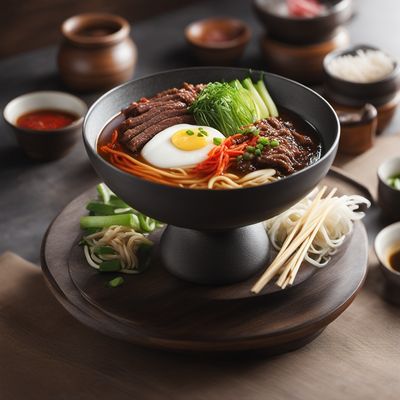
Pyongyang Naengmyeon with Spicy Beef Broth
Chilled Delight: Spicy Beef Naengmyeon - A Refreshing Korean Noodle Dish

Zhejiang-style Onsen Tamago
Silky Egg Delight: Zhejiang-style Onsen Tamago

Taiwanese-style Katsudon
Crispy Pork Cutlet Rice Bowl with Taiwanese Flavors
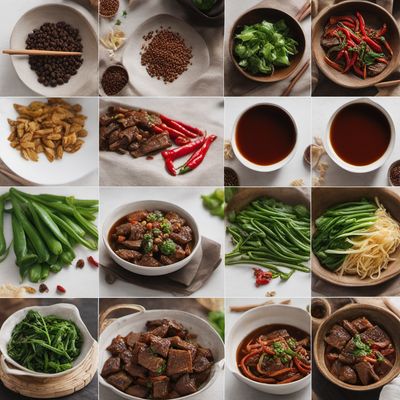
Yunnan-style Beef and Potato Stir-Fry
Yunnan Delight: Fragrant Beef and Potato Stir-Fry

Kung Pao Chicken
Spicy Szechuan Chicken Stir-Fry with Japanese Twist
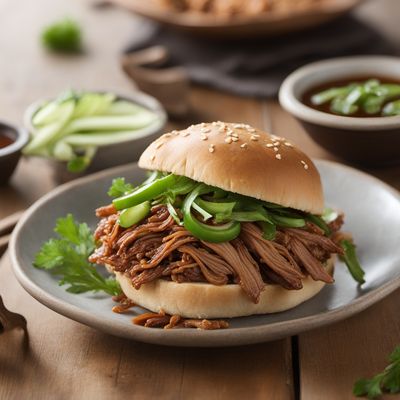
Rou Jia Mo - Chinese Pulled Pork Sandwich
Savory and Succulent: The Ultimate Chinese Pulled Pork Sandwich

Mongolian-style Smoked Lamb
Savory Mongolian Smoked Lamb Delight

Guizhou-style Stuffed Tofu Pockets
Spicy and Savory Tofu Delight: Guizhou-style Stuffed Tofu Pockets
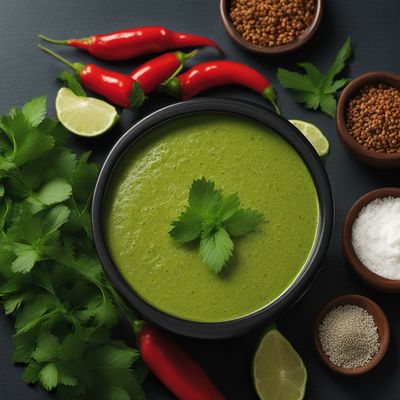
Pachi Palusu - A Refreshing Delight from Navyath Muslim Cuisine
Zesty Mint and Coriander Soup - A Burst of Freshness from Navyath Muslim Cuisine

American Chinese Style Octopus Rice
Savory Octopus Rice with a Chinese Twist
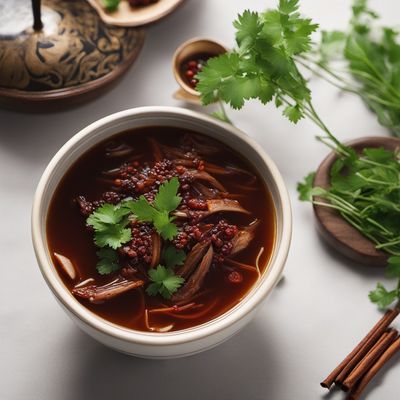
Guangxi-style Duck Blood Soup
Savory Delight: Guangxi-style Duck Blood Soup

New Orleans-style Red Beans and Rice
Creole Comfort: New Orleans Red Beans and Rice
